分享肿瘤评估表CRA监查经验和心得
众所周知,“肿瘤项目经验”这几年了CRA跳槽市场上的“硬通货”,本文将对其中的肿瘤评估表进行介绍,希望能将自己的监查经验以及对RECIST 1.1(实体肿瘤的疗效评价标准 1.1版)及
来源:医疗器械注册代办 发布日期:2023-10-10 阅读量:次
2019年3月FDA发布了基于风险监查方法(RBM)的问题与解答(Q&A)指南草案。分别从监查方法、监查计划内容、监查结果的后续行动和沟通三个方面,共8个问题进行了详细解答。
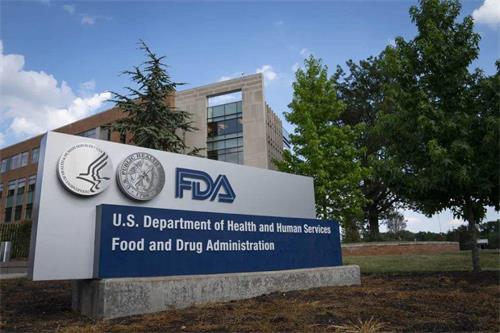
FDA强调基于风险的监查是一个重要的工具。此问答的目的在于帮助申办者规划和实施基于风险的监查方法,为申办者实施RBM提供额外的指导。通过8个问题的解答,FDA具体澄清了记录风险应包含哪些方面;风险监控的重点不仅在影响研究质量的重要和可能的风险,还应监控不太可能发生但可能对研究质量产生重大影响的风险;早期监查的好处;制订监查抽样计划的具体考量等。
指南草案部分重点内容翻译请见下文:
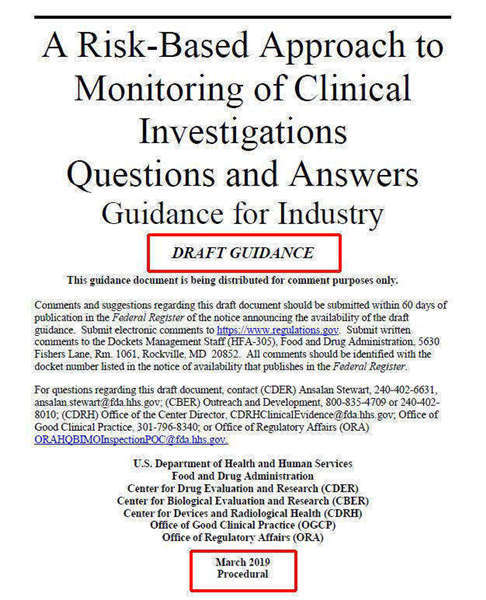
This guidance expands on the guidance for industryOversight of Clinical Investigations – A Risk-Based Approach to Monitoring(August 2013) (the RBM guidance) providing additional guidance to facilitate sponsors’ implementation of risk-based monitoring.
本指南扩展了行业指南:临床研究监督-基于风险的监查方法(2013年8月)(RBM指南),为促进申办者实施基于风险的监查提供额外的指导。
The RBM guidance discusses the importance of identifying critical data and processes necessary for human subject protection and integrity of the investigation, conducting a risk assessment, and developing a monitoring plan specific to the investigation. The RBM guidance also encourages sponsors to tailor monitoring plans to the needs of the investigation, describes factors to consider in developing a monitoring plan, and provides examples of monitoring methods and techniques.
RBM指南讨论了识别影响受试者保护和研究完整性的关键数据和过程、进行风险评估以及制定针对研究的监查计划的重要性。RBM指南还鼓励申办者根据研究需求定制监查计划,描述制定监查计划时要考虑的因素,并提供监查方法和技术的实例。
FDA believes risk-based monitoring is an important tool to allow sponsors to identify and address issues during the conduct of clinical investigations. FDA’s experience since finalizing the RBM guidance in 2013 suggests that additional guidance would be beneficial regarding FDA’s recommendations for planning a monitoring approach, developing the content of monitoring plans, and addressing and communicating monitoring results. The following questions and answers are intended to assist sponsors in planning and conducting risk-based approaches to monitoring
FDA认为基于风险的监查是一个重要的工具,可以让申办者在进行临床研究时识别和解决问题。FDA自2013年发布RBM指南以来的经验表明,对于FDA的建议——规划监查方法,制定监查计划内容以及处理和沟通监查结果,FDA给予额外的指导将是有益的。以下问题和答案旨在帮助申办者规划和实施基于风险的监查方法。
A.Monitoring Approach 监查方法
Q1. What is the purpose of the risk assessment and should sponsors document their methodologies and activities for assessing risk?
风险评估的目的是什么?申办者应该记录他们评估风险的方法和活动吗?
Consistent with the RBM guidance, sponsors should identify and perform a risk assessment on those critical data and processes that are necessary for human subject protection and integrity of the investigation.
根据RBM指南,申办者应识别并执行对关键数据和流程(对人类受试者保护和对于研究完整性是必需的)的风险评估。
The risk assessment serves to identify and understand the nature, sources, likelihood of detection, and potential causes of risks that could affect the collection of critical data or performance of critical processes. The risk assessment informs the development of a monitoring plan and may also support efforts to manage risks across a clinical investigation (for example, through modifying the protocol design or implementation) or across a product’s development program. Therefore, sponsors should document their risk assessment, including methodologies used for the risk assessment, conclusions from the risk assessment, and how the assessment was used to make decisions on the management of the risks identified. Any such document should be available for review.
风险评估用于识别和理解可能影响关键数据收集或关键过程执行的风险的性质、来源、可能性和潜在原因。风险评估可以为监查计划的制定提供信息,也可以支持临床研究(例如,通过修改方案设计或实施)或跨产品开发计划中的风险管理。因此,申办者应记录其风险评估,包括用于风险评估的方法,风险评估的结论,以及如何使用评估来管理所识别的风险。任何上述此类文件都应该可供审查。
The monitoring plan should include information regarding the identified risks and how the monitoring methods will address those risks. (See Q6 for further details.) The inclusion of these components in the monitoring plan will enhance the utility of the plan by providing a clear explanation of the identified risks and how they will be monitored, managed, and mitigated.
监查计划应包括已识别风险以及监查方法如何应对这些风险的信息。(有关详细信息,请参阅Q6。)将这些组件包含在监查计划中,通过明确说明已识别的风险以及如何监控、管理和减轻风险来提高监查计划的实用性。
Q2. Should sponsors monitor only risks that are important and likely to occur?
申办者是否应仅监控重要且可能发生的风险?
A risk-based approach to monitoring should focus sponsor oversight activities on preventing or mitigating important and likely risks to investigation quality, including risks to human subject protection and data integrity. Sponsors also should consider monitoring risks that are less likely to occur but could have a significant impact on the investigation quality. Sponsors should determine the types and intensity of monitoring activities best suited to address the identified risks. In addition, monitoring plans should permit monitoring activities to evolve based on additional issues and risks that may be identified during the conduct of an investigation.
基于风险的监查方法应将申办者监督活动的重点放在预防或减轻影响研究质量的重要和可能的风险上,包括影响受试者保护和数据完整性的风险。申办者还应考虑监控不太可能发生但可能对研究质量产生重大影响的风险。申办者应确定最适合解决已识别风险的监查活动的类型和强度。此外,监查计划应允许监查活动依据在研究过程中可能发现的其他额外问题和风险而发展变化。
Q3. What factors should sponsors consider when determining the timing, types, frequency, and extent of monitoring activities?
在确定监查活动的时间,类型,频率和范围时,申办者应考虑哪些因素?
As described in detail in the RBM guidance, factors sponsors should consider include the following:
如RBM指南中所详述,申办者应考虑的因素包括以下内容:
• Complexity of the study design
研究设计的复杂性
• Types of study endpoints
研究终点的类型
• Clinical complexity of the study population (for example, study populations that are seriously ill, have multiple co-morbidities, or are more vulnerable and may require more intensive monitoring and consideration of on-site monitoring visits to be sure appropriate protection is being provided)
研究人群的临床复杂性(例如,研究人群病情严重,有多种合并症或更易受伤害,可能需要更加密集的监查甚至考虑现场监查访视,以确保提供了适当的保护)
• Geographic location of clinical investigator (CI) sites where there may be differences in standards of medical practice or less established clinical trial infrastructure
临床研究者(CI)所在中心的地理位置,如可能存在医疗实践标准差异或临床试验基础设施较不成熟的中心
• Relative experience of the CI and of the sponsor with the CI
CI及申办方与CI合作的相关经验
• Electronic data capture to be utilized
EDC的利用程度
• Relative safety of the investigational product
研究产品的相对安全性
• Stage of the study (progress of the study)
研究阶段(研究进展)
• Quantity of data
数据质量
FDA also recommends that sponsors consider the following additional factors:
FDA还建议申办者考虑以下其他因素:
•Workload at the CI site
CI所在中心的工作负载
• Turnover of personnel at the CI site or among monitoring staff
CI所在中心研究人员或监查人员的流动
•Similar to workload, high personnel turnover may cause unintended disruptions to conduct of the investigation and sponsor oversight.
与工作量相似,高人员流动率可能会导致非预期的研究和申办者监查中断。
• Location where subjects will be seen and whether they will be seen at more than one location to complete investigation procedures (for example, data collection at the imaging center, at a local physician’s office, or at the subject’s home)
需查看受试者的地点以及是否需要在多个地点查看受试者完成研究程序(例如,需在成像中心,当地医生办公室或受试者家中收集数据)
•When designing the monitoring plan, sponsors should take into consideration where and how the data are going to be collected in the investigation relative to where the sponsor oversight activities will be conducted (for example, to confirm that appropriate controls, instructions, and training tools are in place).
在设计监查计划时,申办者应考虑研究中数据收集的地点和方式,以及相应的申办者实施监督活动的地点(例如,确认适当的控制、说明和培训工具已到位)。
• Benefit of an early monitoring visit or other early monitoring activities
早期监查访视或其他早期监查活动的好处
•By scheduling an early monitoring visit (for example, soon after the first trial subject(s) enrolls in the investigation) or by carrying out other early monitoring activities (for example, through remote processes), sponsors can help ensure early in the investigation that procedures are being performed correctly at CI sites. Alternatively, if early monitoring identifies issues, corrective action(s) can be implemented sooner.
通过安排早期监查访视(例如,在首例试验受试者入组后不久)或通过执行其他早期监查活动(例如,通过远程过程),申办者可帮助确保在研究早期,研究流程在CI所在中心被正确执行。或者,如果早期监查发现问题,则可以更快地实施纠正措施。
• Experience and qualifications of the research coordinator
研究协调员的经验和资格
•The research coordinator serves an important role in ensuring the quality of the execution of the investigation at the investigation site (for example, the research coordinator often recruits subjects, collects and evaluates study data, and maintains study records.)
研究协调员在确保研究中心的研究实施质量方面发挥着重要作用(例如,研究协调员经常招募受试者、收集和评估研究数据,并维护研究记录。)
• Safety profile of the investigational product
研究产品的安全性概况
•When developing a monitoring plan, sponsors should consider the known safety profile, including the available human and non-clinical safety information for the product and the class, and the mechanism of action.
在制定监查计划时,申办者应考虑已知的安全概况,包括该产品和同类别产品已有的人体和非临床安全信息,以及作用机制。
• Characteristics of data to be collected
需收集的数据的特征
•When developing a monitoring plan, sponsors should consider the amount and complexity of the data collected.
在制定监查计划时,申办者应考虑数据收集的数量和复杂程度。
Q4. How can a risk-based approach to monitoring that includes centralized monitoringhelp minimize missing data, protocol violations, or protocol deviations?
基于风险的监查方法(包括中心化监查)如何最大限度地帮助减少数据丢失,方案违背或方案偏离?
There may be situations in which poor trial conduct or adherence to the investigational plan causes or contributes to incomplete data collection. Therefore, by reviewing important investigation activities, in real-time across CI sites, sponsors may be able to identify the reasons for missing data, protocol violations, or protocol deviations and take corrective actions to minimize the likelihood of these occurring during the remainder of the clinical investigation.
在某些情况下,不良的试验实施行为或未遵守研究计划会导致不完整的数据收集。因此,通过对CI所在中心重要研究活动的实时审查,申办者可能能够识别丢失数据、方案违背或方案偏离的原因,并采取纠正措施最大限度地降低这些活动在其他临床研究部分发生的可能性。
Q5. Should the risk-based monitoring approach include processes to ensure that appropriate blinding is maintained?
基于风险的监查方法是否应包括确保适当盲法保持的过程?
Yes. As identified in the RBM guidance, for investigations in which blinding will be used for interventions and/or outcome assessments, ensuring that the investigation blind is maintained is a critical process that sponsors should consider in their risk assessment.
是。正如在RBM指南中所指出的,对于盲法将用于干预和/或结果评估的研究,确保研究盲态保持是一个关键过程,申办者应在其风险评估中考虑这一过程。
Specific risks to the maintenance of the blind that are identified during the risk assessment should be mitigated in advance of investigation initiation, when feasible. In addition, identifying and tracking deviations during investigation conduct that could result in unintentional unblinding of treatment assignment should be considered as a part of the monitoring plan to ensure that appropriate blinding is maintained at CI sites and by the sponsor. For example, in a blinded investigation that requires a site staff member to be unblinded to administer the test article, the site processes for maintaining the blind for the remainder of the site staff and the sponsor should be monitored.
风险评估中确定的对于盲态维持的特定风险,应在研究开始之前减轻该风险(如可行)。此外,在研究过程中识别和跟踪可能导致无意中揭示治疗分配的偏离,应作为监查计划的一部分,以确保在CI所在中心和申办者保持适当的盲态。例如,在盲法研究中,若要求研究中心一个工作人员以非盲态管理、发放研究测试产品,则应监控维持研究中心其他工作人员和申办者盲态的流程。
FDA recognizes that Data Monitoring Committees (DMC) may access unblinded data as described in the DMC Charter. (For additional information about DMC, see the guidance for clinical trial sponsors Establishment & Operation of Clinical Trial Data Monitoring Committees (March 2006.)
FDA认识到数据监测委员会(DMC)可以访问DMC章程中描述的非盲数据。(有关DMC的其他信息,请参阅临床试验申办者指南:临床试验数据监测委员会的建立和运行(2006年3月)。
B. Monitoring Plan Content
监查计划内容
Q6. What elements should sponsors include in monitoring plans?
申办者应该在监查计划中包括哪些要素?
The following elements (discussed in detail in section IV.D of the RBM guidance) are summarized here to assist sponsors in developing monitoring plans:
这里总结了以下要素(在RBM指南第IV.D节中详细讨论),以协助申办者制定监查计划:
• A synopsis of the study
研究概要
• Study objectives
研究目标
• Identification of critical data and study procedures
确定关键数据和研究程序
• Trial-specific risks to be addressed by monitoring
通过监查解决特定的试验风险
• Monitoring methods and rationale for use of the monitoring methods, including how the methods address identified risks
监查方法和使用监查方法的合理性,包括该方法如何处理已识别的风险
• Criteria for determining the timing, types, frequency, and extent of monitoring activities
确定监查活动的时间、类型、频率和范围的标准
• Specific activities necessary for each monitoring method used
使用的每种监查方法所必需的具体活动
• Definitions of events or results that would trigger changes in monitoring activities (for example, how protocol deviations may be monitored as events that would trigger changes in monitoring activities)
可触发监查活动变化的事件或结果的定义(例如,方案偏离如何作为可触发监查活动变化的事件进行监测)
• Identification of protocol deviations and failures that, if occurred, would affect study integrity, and how they will be recorded, tracked, and reported
识别可影响研究完整性的方案偏离和失败,如果发生,以及如何记录,跟踪和报告
• Format, content, timing, and archiving requirements for documentation of monitoring activities
监查活动文档的格式、内容、时间和归档要求
• Processes for communicating routine monitoring results to appropriate parties
将常规监查结果传达给相关方的流程
• Processes for immediate reporting of significant monitoring issues to appropriate parties
向适当的各方立即报告重大监查问题的流程
• Processes for appropriate communication from study management and other stakeholders to monitors
从研究管理方和其他利益相关方到监查员的适当沟通流程
• Processes to address unresolved or significant issues identified by monitoring
处理通过监查确定的未解决或重大问题的流程
• Processes to ensure that root cause analyses are conducted where important deviations are discovered and that corrective and preventative actions are implemented
确保在发现重要偏离并实施纠正和预防措施的情况下,进行根本原因分析的流程
• Other quality management practices applicable to the clinical investigation (for example, reference to other documents describing appropriate actions regarding non-compliance)
适用于临床研究的其他质量管理实践(例如,参考描述针对不合规的适当行动的其他文件)
• Training for personnel who carry out monitoring activities
为开展监查活动的人员提供培训
• Planned audits of monitoring activities
计划对监查活动进行稽查
• Process for updating monitoring plans
更新监查计划的流程
In addition, FDA recommends that monitoring plans also include the following items, which will help explain how the sponsor intends to address the risks that could affect the clinical investigation.
此外,FDA建议监查计划还包括以下项目,这将有助于解释申办者打算如何解决可能影响临床研究的风险。
• A description of the investigation design and the blinding and randomization procedures, if applicable
描述研究设计以及盲法和随机化流程(如果适用)
• Processes for confirming that randomization is performed according to the protocol and investigational plan when randomization is identified as a risk to be addressed by monitoring
当通过监查确定随机化为需解决的风险时,确认随机化根据方案和研究计划执行的流程
• Sampling plan(s) that will be used to identify the specific records and data that will be monitored, including the rationale for how the sampling plan provides a representative picture of the overall information, and how the sampling plan will be implemented
监测抽样计划(该抽样计划用于确定需要监控的具体记录和数据),包括抽样计划如何有代表性(代表整体信息),以及如何实施抽样计划
• A description of the types of significant issues identified through monitoring that would trigger immediate issue escalation
描述通过监查确定的、可立即引发问题升级的重大问题类型
• An approach for determining if issues identified at a site also exist at other CI sites and an approach for correcting these issues
确定某个中心发现的问题是否也存在于其他CI所在中心的方法以及纠正这些问题的方法
The monitoring plan should describe each of these items in sufficient detail. Sponsors also should reference related documents, when appropriate. Sponsors are encouraged to develop monitoring plans that emphasize critical risks that have the greatest potential to adversely affect investigation quality, including the rights, safety, and welfare of investigation subjects, and the collection or analysis of clinical data such as investigation safety and efficacy endpoints.
监查计划应详细描述这些项目中的每一项。申办者还应酌情参考相关文件。鼓励申办者制定监查计划,强调最有可能对研究质量产生不利影响的关键风险,包括研究受试者的权利,安全和福利,以及研究安全性和疗效终点等临床数据的收集或分析。
C. Follow-Up and Communication of Monitoring Results
监查结果的后续行动和沟通
Q7. How should sponsors follow up on significant issues identified through monitoring, including communication of such issues?
申办者应如何跟踪通过监查发现的重大问题,包括沟通此类问题?
Significant issues identified through monitoring (for example, significant non-compliance with the protocol) should be thoroughly evaluated in a timely manner at the appropriate level (for example, sponsor, CI site(s)) as described in the monitoring plan. Appropriate corrective and preventative actions should be taken. Deviations from the investigational plan should be documented, tracked, and escalated to relevant personnel, as appropriate. Related systemic issues should be identified and resolved promptly to ensure that investigation quality, including the rights, safety, and welfare of investigation subjects and data integrity, is maintained.
通过监查确定的重大问题(例如,严重不依从方案)应及时进行彻底评估(如监查计划中所述的适当级别,例如,申办方,CI所在中心)。
应采取适当的纠正和预防措施。应酌情记录、跟踪研究计划的偏离,并将其上报给相关人员。
应及时发现并解决相关的系统性问题,以确保研究质量,包括维护研究受试者的权利,安全和福利以及数据完整性。
Although not an exhaustive list, some examples of corrective and preventive actions that may be needed include retraining CI and site staff;clarifying protocol requirements through protocol amendment(s);or revision(s) to informed consent documents or procedures.
虽然不是详尽的清单,但一些纠正和预防措施的例子可能需要对CI和研究中心工作人员等进行再培训;通过方案修正以澄清方案要求;或修订知情同意文件或程序。
Significant issues identified through monitoring and the actions to be taken should be documented and communicated to the appropriate parties, which may include, but are not limited to, the following: (1) sponsor management, (2) sponsor teams, (3) CI sites, (4) institutional review board(s), (5) other relevant parties (for example, DMCs and relevant contract research organizations), and (6) FDA, when appropriate.
通过监查确定的重大问题和应采取的行动应记录在案并传达给相关方,其中可能包括但不限于以下方面:(1)申办者管理层,(2)申办者团队,(3)CI所在中心,(4)机构审查委员会,(5)其他相关方(例如,DMC和相关合同研究组织),以及(6)FDA,适当时。
(See Q6 for a description of elements that sponsors should include in monitoring plans regarding follow up and communication of significant issues.)
(有关申办者在监查计划中应包括的要素的说明,请参见Q6关于重大问题的跟进和沟通。)
Q8. How should centralized monitoring activities and the results of these activities be documented and shared with those involved in the investigation?
如何记录中心化监查活动和这些活动的结果,并与参与研究的人员分享?
As described in the RBM guidance, documentation of monitoring activities should generally include the following: (1) the date of the activity; (2) the individual(s) conducting and participating in the activity; (3) a summary of the data or activities reviewed; (4) a description of any noncompliance, potential noncompliance, data irregularities, or other deficiencies identified; and (5) a description of any actions taken, to be taken, or recommended (see section V of the RBM guidance for details). Such documentation should include the results of centralized monitoring activities in sufficient detail to allow verification of adherence to the monitoring plan describing those activities.
如RBM指南所述,监查活动的文件通常应包括以下内容:(1)活动日期; (2)进行和参与活动的个人;(3)审查的数据或活动摘要; (4)对任何不依从、潜在不依从、数据违规或其他缺陷的描述;(5)对已采取、将采取或建议采取的任何行动的描述(详情见RBM指南第五节)。此类文件应包括足够详细的中心化监查活动的结果,以便核实描述的活动对监查计划的遵守情况。
Reports of centralized monitoring activities should be provided to appropriate management, including sponsor staff responsible for investigation and site oversight, in a timely manner for review and follow up. In addition, sponsors should inform a CI of monitoring findings from centralized monitoring activities that are relevant to the CI’s activities.
应及时向适当的管理层提供中心化监查活动的报告(包括负责研究和监督研究中心的申办方人员),以便进行审查和跟进。此外,申办者应将中心化监查发现的、与CI活动相关的问题向CI通报。
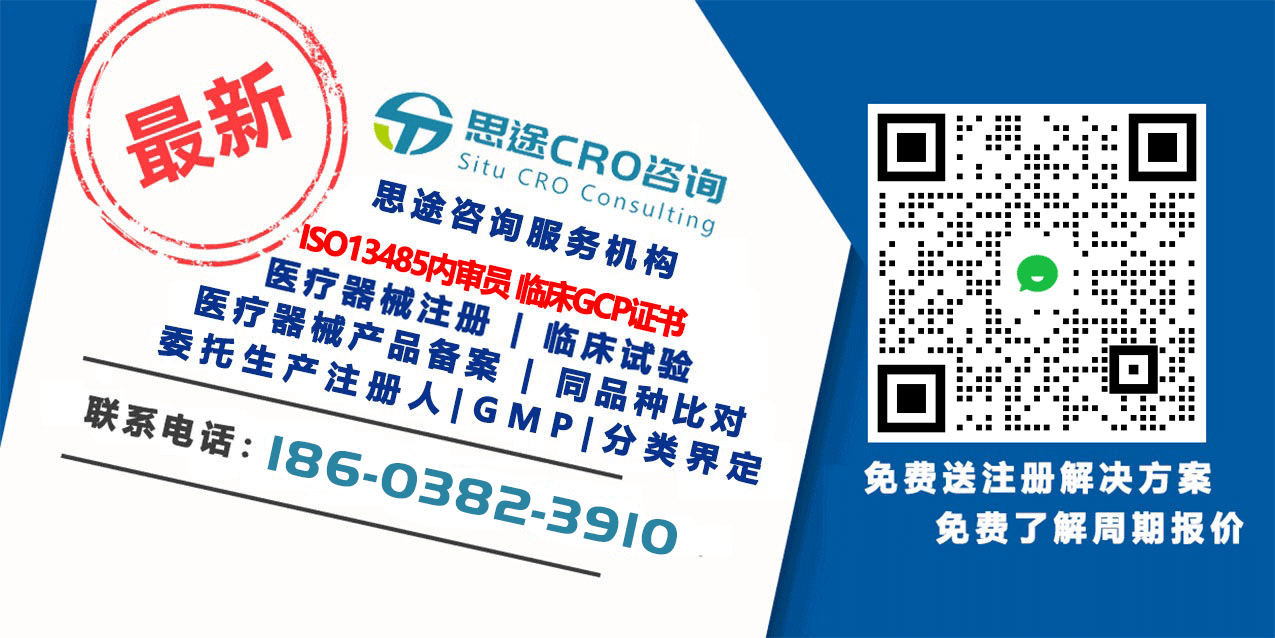
站点声明
本网站所提供的信息仅供参考之用,并不代表本网赞同其观点,也不代表本网对其真实性负责。图片版权归原作者所有,如有侵权请联系我们,我们立刻删除。如有关于作品内容、版权或其它问题请于作品发表后的30日内与本站联系,本网将迅速给您回应并做相关处理。
郑州思途医疗科技有限公司专注于医疗器械产品政策与法规规事务服务,提供产品注册备案申报代理、临床试验、体系建立辅导、分类界定、申请创新办理服务。

众所周知,“肿瘤项目经验”这几年了CRA跳槽市场上的“硬通货”,本文将对其中的肿瘤评估表进行介绍,希望能将自己的监查经验以及对RECIST 1.1(实体肿瘤的疗效评价标准 1.1版)及
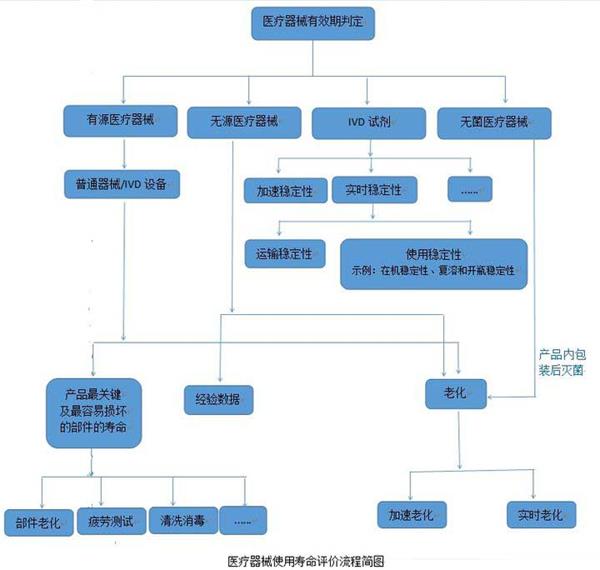
医疗器械的使用寿命是指医疗器械从规划、设计、生产、销售、安装调试到使用、维修、维护检测、报废的全过程。而医院使用的医疗器械的应用质量和安全管理在整个寿命过程中占重

从事医疗器械注册的小伙伴们可能都为同一个问题苦恼过,那就是医疗器械注册单元的划分。企业所设计开发出的产品,其所包含的产品范围,是否可通过一个注册单元完成注册,从而

你是否遇到过这样的问题,国产化妆品小品牌不少,怕买到假冒伪劣产品,现在的仿造化妆品也不少,外包装还同样有防伪标签,就很头疼。那么,查询国产非特殊用途化妆品备案信息

随机化被奉为临床试验设计的三大基本原则之一,随机临床试验被视为临床试验的“金标准”,所产生的证据被循证医学界确定为高等级证据。对于医疗器械临床试验,2018年1月由CFDA发

每年临研人才市场最为热闹的3、4月份就要来了。很多粉丝朋友都是跟着我从CRA一路走到PM的,相信也有不少人下一个职业生涯的目标也是PM这个岗位。凑巧的是,我正好在前段时间经历

2019-12-01药物临床试验机构(简称机构)开始实行备案管理。本文结合机构备案平台构建思路,着重介绍了备案平台的结构组成以及相关要求,梳理了机构备案过程中的常见问题,对机构

CRA往往面临着两轮或三轮的面试要求,HR面试和项目经理面试,有些优质CRO公司甚至遭到部门副总的第三轮接待。我起初是不情愿解答这些问题,担心解答不好误人子弟。以下是潇潇兮同

作为一名苦逼的CRA,除了日常的监查工作以外,也许还有一个让人很头疼的问题,每次项目会议上PM重复又重复了的话题:“亲,这个Site的进度太慢啦,想想办法啊!CRA:我在想 我在想
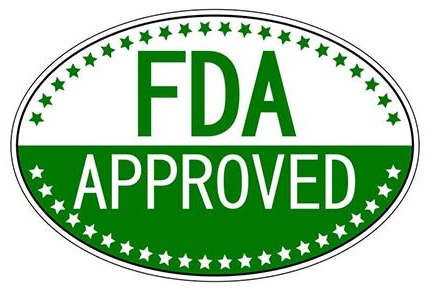
FDA新药审评程序包括新药临床试验申请IND申报和新药申请NDA申报两个过程,申请人在完成新药临床前研究后,便可向FDA提出IND申请,若FDA在收到后30天内未提出反对意见,申请人便可自行
行业资讯
知识分享
八年
医疗器械服务经验
联系思途,免费获得专属《落地解决方案》及报价
咨询相关问题或咨询报价,可以直接与我们联系
思途CRO——医疗器械注册临床第三方平台
